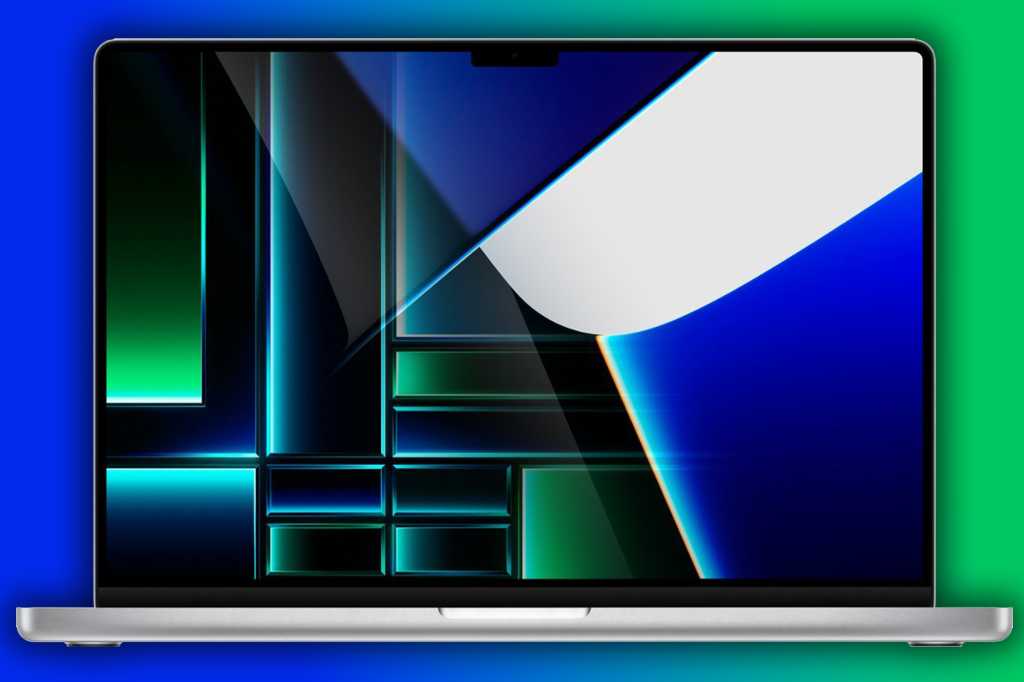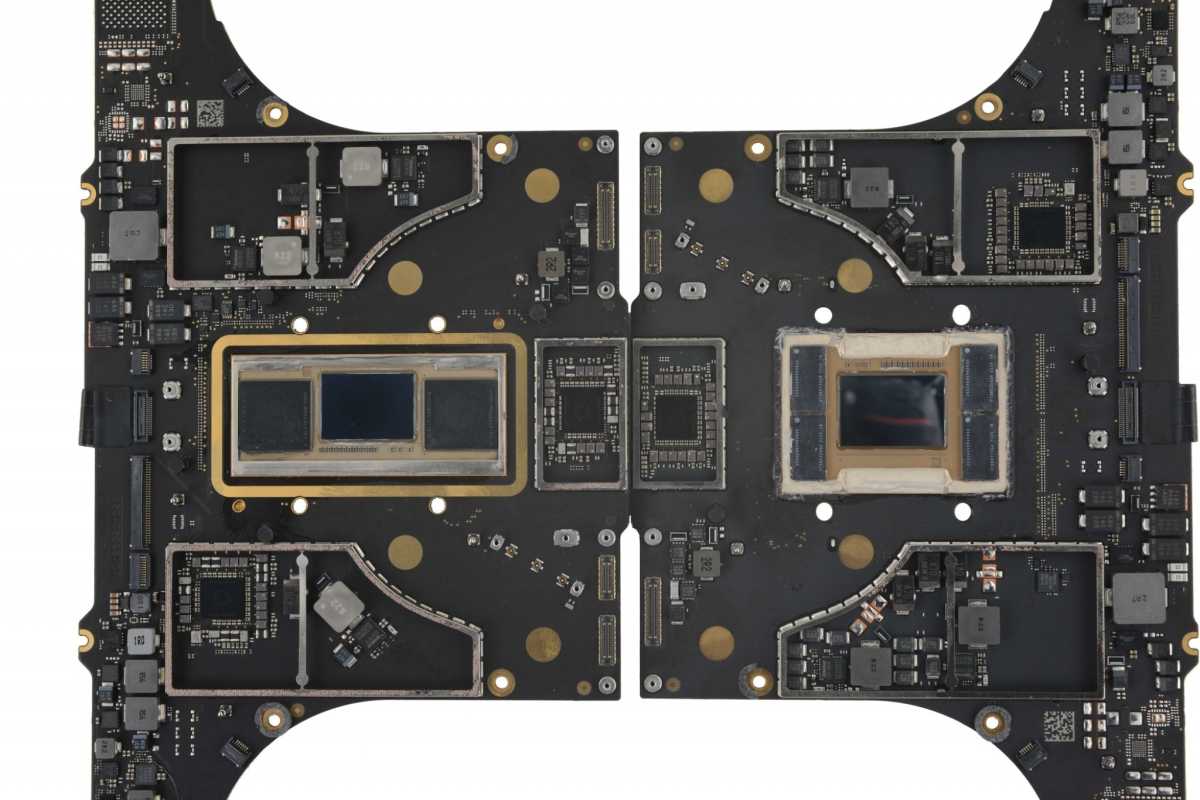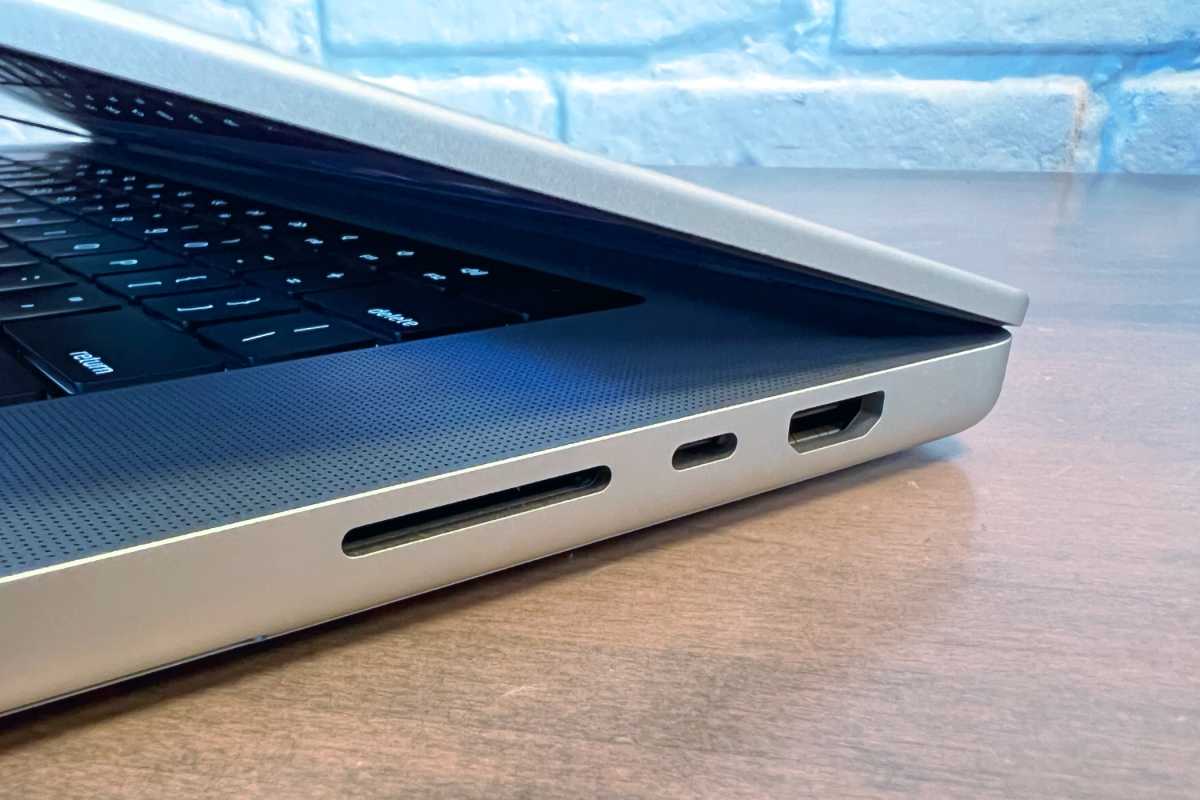

From $1,999 | Model reviewed $2,499
$1,948.94

$1999

$1999.00

$2349.95

$3097.86
Apple’s 14- and 16-inch MacBook Pro sit at the high end of the company’s laptop lineup. These laptops feature the highest-level mobile processors, displays, and features for the most demanding users. Apple introduced the Pro and Max versions of the M1 processor in October 2021 and followed that up with the M2 Pro and M2 Max in January 2023.
If you have an old model, you might be thinking of upgrading. Or maybe you’re trying to decide between a deal on an older model versus a full-priced newer one. This article looks at the differences between the M2 Pro/Max and M1 Pro/Max versions of the laptop to help you understand what you’re getting when you make the investment. For a more in-depth look at the newest MacBook Pro, you can read our full review.
The 2023 MacBook Pro is an incremental upgrade to the 2021 version, so most of the features are the same. Here’s a list of what did not change between the two laptops:

$2,449.99

$2449.99

$2499.00

$2499

$3198
The major difference between the 2021 and 2021 MacBook Pro models is the chips inside them. The M2 Pro and M2 Max processor in the 2023 models offer more power than the previous generation, with more cores and bandwidth.
| M1 Pro | M1 Max | M2 Pro | M2 Max | |
| CPU cores | 8 or 10 (6/8 performance, 2 efficiency) | 10 (6/8 performance, 2 efficiency) | 10 or 12 (6/8 performance, 4 efficiency) | 12 (8 performance, 4 efficiency) |
| GPU cores | 14 or 16 | 24 or 32 | 16 or 19 | 30 or 38 |
| Unified memory | 16GB, 32GB | 32GB, 64GB | 16GB, 32GB | 32GB, 64GB/96GB with 38-core GPU |
| Memory bandwidth | 200GBps | 400GBps | 200GBps | 400GBps |
| Neural Engine | 16-core | 16-core | 16-core | 16-core |
Apple claims a 20 percent increase in CPU performance for the M2 Pro/Max over the M1 Pro/Max, which matches the benchmarks we ran in our review. What does that mean from a user perspective? If you’re a professional who’s constantly doing CPU-intensive tasks, a 20 percent increase is probably worth a lot of time and money. If you dabble in pro apps but mostly use consumer-level software, you may not notice the difference as much because your tasks aren’t as demanding.
On the graphics side, Apple says that the M2 Pro/Max provides a 30 percent GPU improvement over the M1 Pro/Max, and in our testing, we saw increases between 20 and 30 percent. Just as with the CPU, if you’re currently using an M1 Pro/Max as a professional and you’re using high-end graphics software to do some serious rendering, the improvement will be noticeable. For everyone else, the M1 Pro or M1 Max will be good enough.
The memory configurations, as noted in the table in the CPU section, are similar between the M1 Pro/Max and M2 Pro/Max. The Pro models can have 16GB or 32GB, while the Max models have 32GB or 64GB.
Apple also offers a 96GB memory configuration for the first time, but only if you buy the highest-end M1 Max model with a 38-core GPU. That will cost at least $4,099 for the 14-inch model or $4,299 for the 16-inch model.
The memory used by the M2 Pro and M2 Max chips is installed in 4GB RAM modules, which is different from the 8GB modules used by the M1 machines. Apple made this change likely because of supply chain issues, and it doesn’t have a noticeable effect on performance.

Apple didn’t change the SSD configurations with the M2 update. The entry-level M1 Pro models have a 512GB SSD while the M1 Max models start at 1TB. Upgrades are available for 2TB, 4TB, or 8TB options.
However, like with the memory, Apple changed the configuration of the chips it uses for its entry-level SSDs. In the 512GB model, Apple uses two 256GB modules instead of four 128GB models. These larger modules mean that fewer data channels can be used in parallel, which results in slower performance. Several outlets have reported that the entry-level 14-inch MacBook Pro’s SSD is slower than the comparable M1 Pro model.
The good news is that most people won’t notice the performance hit during everyday use. And if you buy a 1TB model you won’t see a performance hit. Since most MacBook Pro users who would notice the slower speeds are likely getting at least a terabyte of storage anyway, it probably won’t be an issue. But it’s definitely a downgrade over the prior model.
While the 14-inch and 16-inch MacBook Pros have excellent displays (which are unchanged from the 2021 model), you can also connect one or more external displays using Thunderbolt and HDMI. Things have changed a bit from the older model:
Thunderbolt only
HDMI only
Thunderbolt and HDMI
The limited HDMI 2.0 in the M1 Pro/Mac MacBook Pro was a big knock against the laptop, especially in a professional workstation setup. With the 2023 MacBook Pro, Apple upgraded the HDMI implementation to version 2.1, which allows for additional displays at higher resolution and refresh rates. If you need display flexibility, the upgrade is a welcome change.

The 2023 MacBook Pro’s HDMI port has been upgraded to version 2.1.
Foundry
Apple replaced the Wi-Fi 6 in the 2021 MacBook Pro with Wi-Fi 6E in the 2023 models. Just based on the name of the new Wi-Fi, it may not seem like much of an upgrade–and in practical use right now, there isn’t a huge advantage to having it. But Wi-Fi 6E can access the new spectrum in the 6GHz range, which means better speed. However, Wi-Fi routers and hotspots have to be 6E compatible, too, for the extra speed to kick in.
Apple also replaced Bluetooth 5.0 in the M1 MacBook Pro models with Bluetooth 5.3 in the M2 version. Version 5.3 offers better performance, stability, and security than version 5.0. A Bluetooth device must have version 5.3 to take full advantage of it, but Bluetooth 5.0 devices will work fine.
Wi-Fi 6E and Bluetooth 5.3 are features that help future-proof the M2 Pro and M2 Max MacBook Pro. Devices that use these technologies are not widespread now, but they will be for more common in the coming months. And when that happens, the 2023 models will be ready to take advantage.
Thanks to efficiency improvements in the M2 chip, the 2023 MacBook Pro has a battery life that’s one hour longer than the battery in the M1 models. The battery life was already long enough to last a day, so an extra hour may not be enough to sway a buying decision one way or another, but longer is always better.
The 2023 MacBook Pro isn’t a huge upgrade over the 2021 model, but it does bring some nice additions. Basically, you should ask yourself three questions before you make a decision:
If you answered yes to any of these, then you should consider an M2 model (and spring for more storage than 512GB). Otherwise, you’ll be happy keeping your M1 MacBook Pro for another year or saving a few hundred bucks when you buy one.
You can find the best prices for the 2021 14-inch MacBook Pro and the 2021 16-inch MacBook Pro below. We also recommend you take a look at our MacBook Pro deals round up for deals on every model, new and old.
14-inch MacBook Pro, 2021

$1,889.95

$1894.93

$1899.00

$1999
B&H Photo and Video
$1999

$2404.95
B & H Photo
Not Available
16-inch MacBook Pro, 2021

$2099

$2,099.00

$2229

$2299.00

$2499
B & H Photo
Not Available
For more help picking the best MacBook for you read our Best MacBook guide, we also compare the three MAcBook Pro models, see: 13-inch, 14-inch and 16-inch MacBook Pro compared.
24World Media does not take any responsibility of the information you see on this page. The content this page contains is from independent third-party content provider. If you have any concerns regarding the content, please free to write us here: contact@24worldmedia.com

A Brief Look at the History of Telematics and Vehicles

Tips for Helping Your Students Learn More Efficiently

How To Diagnose Common Diesel Engine Problems Like a Pro

4 Common Myths About Wildland Firefighting Debunked

Is It Possible To Modernize Off-Grid Living?

4 Advantages of Owning Your Own Dump Truck

5 Characteristics of Truth and Consequences in NM

How To Make Your Wedding More Accessible

Ensure Large-Format Printing Success With These Tips

4 Reasons To Consider an Artificial Lawn

The Importance of Industrial Bearings in Manufacturing

5 Tips for Getting Your First Product Out the Door